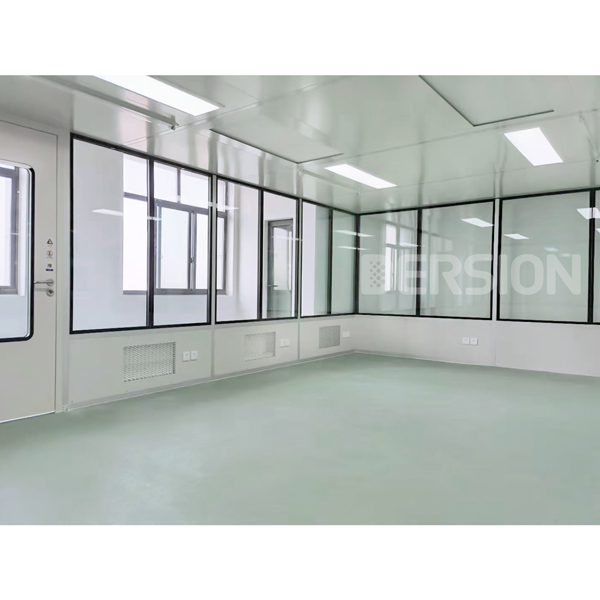The development of dust-free workshops is closely linked with modern industry and cutting-edge technology. At present, it has been widely and maturely used in biopharmaceutical, medical and health, food daily chemical, electronic optics, energy, precision instruments, and other industries.
Air cleanliness class (air cleanliness class): In a unit volume of air in a clean space, the class standard is divided by the maximum concentration limit of particles greater than or equal to the particle size under consideration. In China, the dust-free workshop is tested and accepted according to the empty, static, and dynamic states, which conforms to the “GB50073-2013 Clean Room Design Code” and “GB50591-2010 Clean Room Construction and Acceptance Code”.
The following cleanliness levels are the lower levels recommended by production licenses, regulatory standards, etc. During actual construction, if companies want to improve product quality, they can increase it appropriately.
Food: Generally speaking, the cleanliness of food dust-free workshops/clean rooms/clean workshops is not high, and most are from Class 10,000 to Class 300,000.
When the filling area of packaged drinking water (bottled, barreled water) needs to be static, it should reach level 10,000 and the filling area should reach level 100, or the overall cleanliness should reach level 1,000.
The static air cleanliness of the filling protection area for tea, fruit and vegetable juices, proteins, and other beverages should at least meet the requirements of level 100,000.
The requirements for the filling protection area of carbonated beverages are relatively low, and the cleanliness level can be set at around 300,000 levels.
The dry mixing area and inner packaging area of solid beverages (coffee roasting, etc.) are clean operation areas. The specific cleanliness levels should be formulated according to the characteristics and process requirements of different types of solid beverages, but primary and medium-efficiency air purification equipment must be installed. . Recommended for level 100,000.
Cosmetics: Eye skin care, children’s skin care and toothpaste, some key processes (semi-finished product storage room, filling room, clean container storage room) must reach a cleanliness level of 300,000. Other skin care cosmetics should also meet this standard. The cleanliness level can also be appropriately increased, with recommendations of level 10,000 and level 100,000.
Data Center: When tested under static or dynamic conditions, the number of suspended particles with a particle size greater than or equal to 0.5 μm per cubic meter of air should be less than 17,600,000 particles. Calculated according to the national standard “Clean Factory Design Code” GB50073, the air cleanliness level required by this value is ISO8.7. Recommended for level 100,000.
Disposable sterile injection and infusion medical devices: including disposable sterile syringes, infusion sets, blood transfusion sets, burette infusion sets, sterile injection needles, intravenous infusion needles, plastic blood bags, and blood collection devices. All injection, extrusion, and blow molded parts of products produced by enterprises that produce disposable sterile injection and infusion equipment should be produced within the factory; important parts and components should be produced in the 100,000-level clean area (clean room, dust-free area) of the factory. Production in the workshop) (single packaging bags of self-made or purchased products are produced in a 300,000-level clean room), including the production, final cleaning, assembly, and initialization of parts, components, and protective covers that are in direct contact with the medicine (blood) liquid. Packaging and other processes must be carried out in a class 100,000 clean room in the same building in the factory.
Post time: Oct-16-2024

